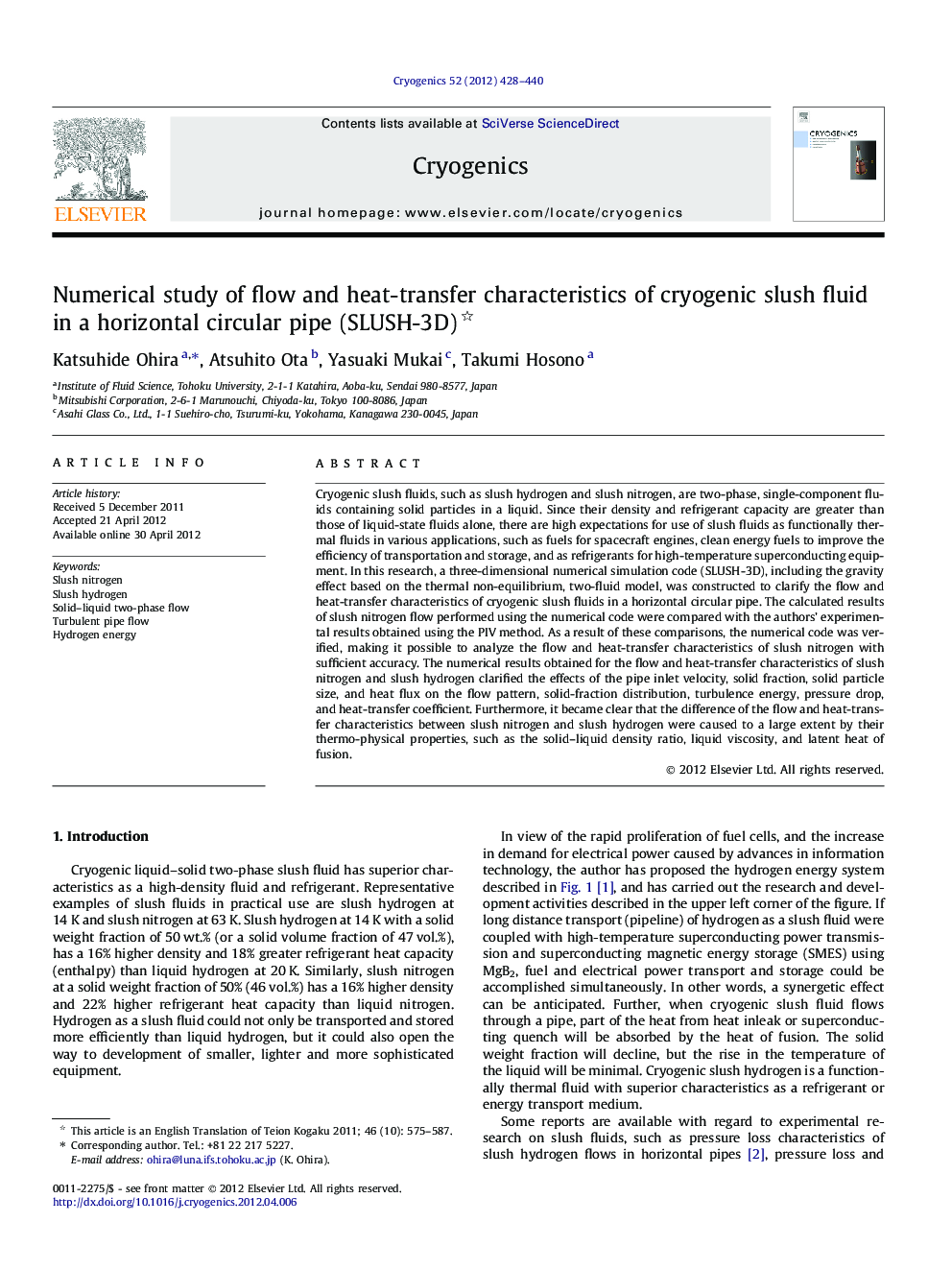| Article ID | Journal | Published Year | Pages | File Type |
|---|---|---|---|---|
| 1507544 | Cryogenics | 2012 | 13 Pages |
Cryogenic slush fluids, such as slush hydrogen and slush nitrogen, are two-phase, single-component fluids containing solid particles in a liquid. Since their density and refrigerant capacity are greater than those of liquid-state fluids alone, there are high expectations for use of slush fluids as functionally thermal fluids in various applications, such as fuels for spacecraft engines, clean energy fuels to improve the efficiency of transportation and storage, and as refrigerants for high-temperature superconducting equipment. In this research, a three-dimensional numerical simulation code (SLUSH-3D), including the gravity effect based on the thermal non-equilibrium, two-fluid model, was constructed to clarify the flow and heat-transfer characteristics of cryogenic slush fluids in a horizontal circular pipe. The calculated results of slush nitrogen flow performed using the numerical code were compared with the authors’ experimental results obtained using the PIV method. As a result of these comparisons, the numerical code was verified, making it possible to analyze the flow and heat-transfer characteristics of slush nitrogen with sufficient accuracy. The numerical results obtained for the flow and heat-transfer characteristics of slush nitrogen and slush hydrogen clarified the effects of the pipe inlet velocity, solid fraction, solid particle size, and heat flux on the flow pattern, solid-fraction distribution, turbulence energy, pressure drop, and heat-transfer coefficient. Furthermore, it became clear that the difference of the flow and heat-transfer characteristics between slush nitrogen and slush hydrogen were caused to a large extent by their thermo-physical properties, such as the solid–liquid density ratio, liquid viscosity, and latent heat of fusion.
► Three-dimensional numerical code for slush flow (SLUSH-3D) was developed. ► Numerical results were compared with the author’s experimental data. ► Flow pattern shifted from heterogeneous to homogeneous at high flow velocities. ► Flow patterns were affected by the velocity, solid fraction and solid particle size. ► Flow and heat-transfer differences between slush N2 and slush H2 became clear.
